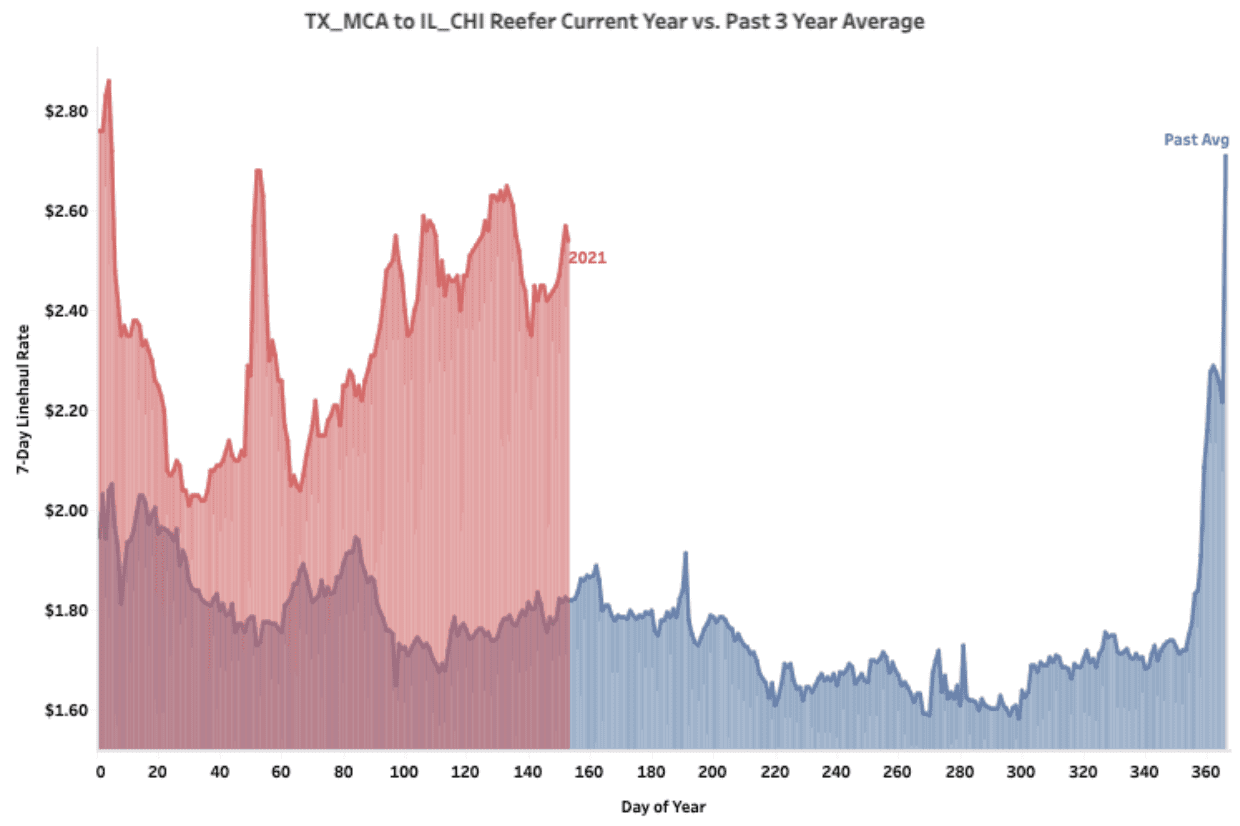June is National Mango Month and July 22 is National Mango Day this year, according to the National Mango Board (NMB).
The timing coincides with mango imports shifting from Central America (which produces 34% of imported mangoes) to Mexico (which produces 66%). This means carriers and brokers will begin seeing lower truckload volumes at ports like Philadelphia, PA and more in McAllen, TX and Tucson, AZ border markets.
Get the clearest, most accurate view of the truckload marketplace with data from DAT iQ.
Tune into DAT iQ Live, live on YouTube or LinkedIn, 10am ET every Tuesday.
“The [NMB] is expecting mango shipment volumes to be about 16% higher this year following last year’s major drop,” says Rolff Mitton, NMB Research Manager. “For the eight-week period ending mid-June, mango shipments should be about 27 million boxes, which is four million more boxes than the 23 million in the same period last year.”
In truckload terms that’s the equivalent of just under 6,000 full loads of the exotic fruit.
While mangoes are available to U.S. consumers year-round, promotions ramp up in spring and summer. That’s when 54% of annual mango production is shipped between May and August according to 2020 USDA data.
Truckload volumes typically run around 550 loads per week in peak season with 64% of loads crossing in Pharr, TX in the McAllen freight market. The next biggest crossing point is in Nogales, AZ in the Tucson market with 34% of truckloads for distribution to West Coast, Pacific Northwest and even Midwest markets.
Carriers may notice a smoother ride
Changes are coming to how mangoes are packed and shipped, which will make a lot of difference to carriers exposed to cargo claims as a result of transit damage.
According to a 2016 mango board report, the older, smaller boxes don’t stack well with other produce boxes and can damage other commodities when mixed pallets are consolidated. Pallets with smaller-size boxes are also less stable, fall over more often and don’t hold up as well with the humidity of ripening rooms.
Central American Produce and CAPCO Farms and its members are moving to transition to shipping with larger boxes. The new five-down 22-24 pound boxes will replace the standard 14-down 8.8 pound boxes.
“These larger boxes ship better with less delivery failure, have holes for vertical and horizontal air flow, and are great for larger displays at retailers, where mangoes are moving from small exotic fruit sections into the larger mainstream spots,” says Michael Warren, President of Central American Produce and CAPCO Farms.
High freight rates will persist through mango season
High freight rates have been a challenge for growers in 2021 with supply challenges expected to persist into the fall. In McAllen and Tucson markets — the two major mango commercial zone crossings — spot rates for refrigerated loads have been steadily increasing since March.

In McAllen, reefer spot rates for loads to Chicago are $2.51/mile, which is around $0.64/mile higher than the 3-year average for this time of the year. Further west in the Tucson market, loads from Nogales to Minneapolis are currently paying $3.76/mile, which is $1.20/mile higher than May last year but up $1.35/mile since February this year.


